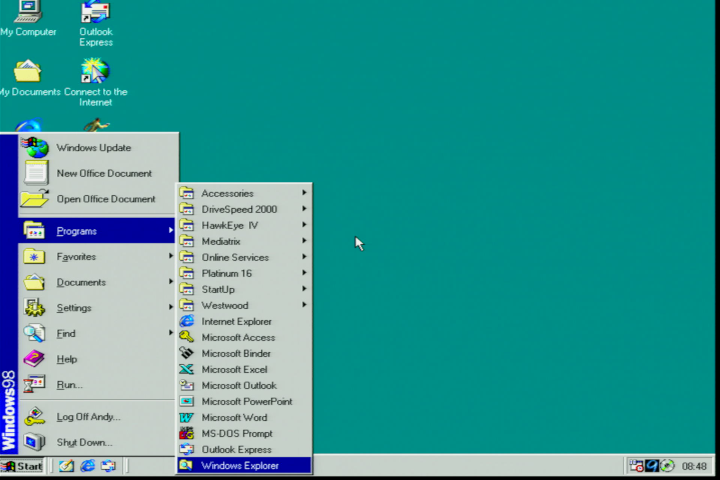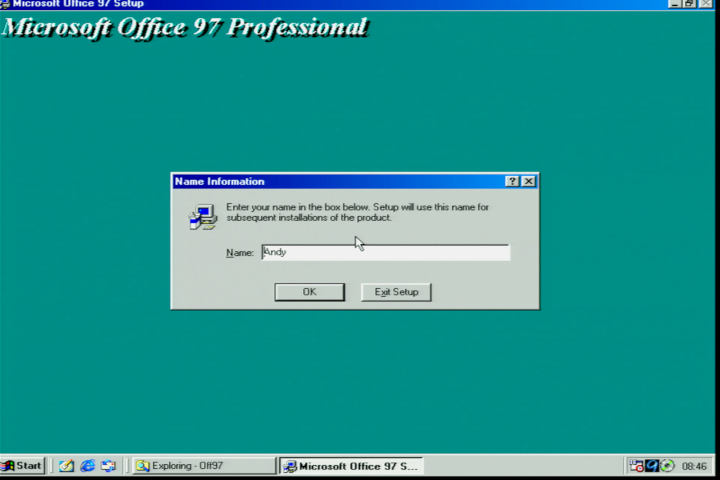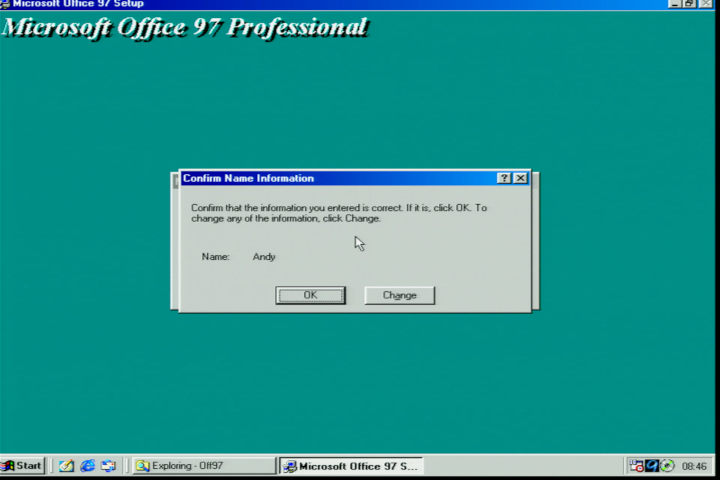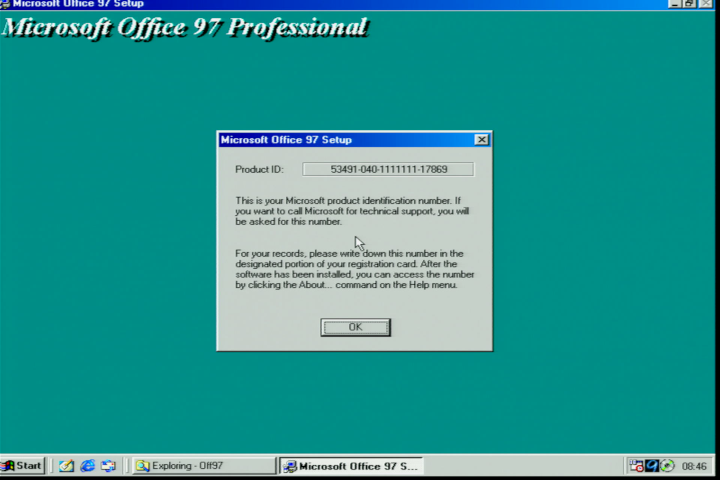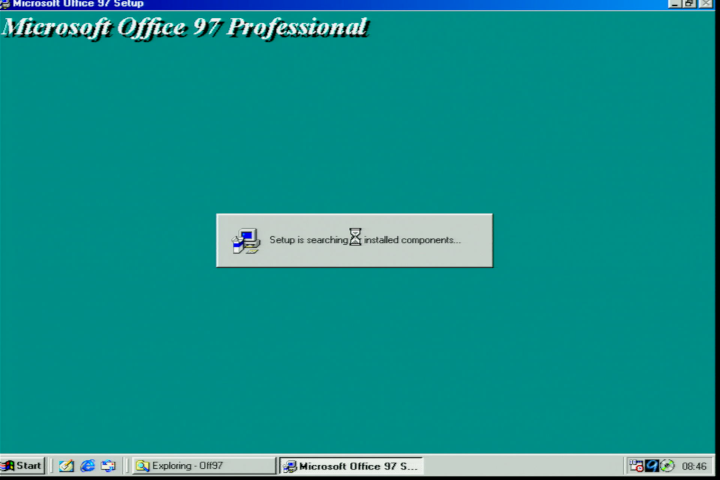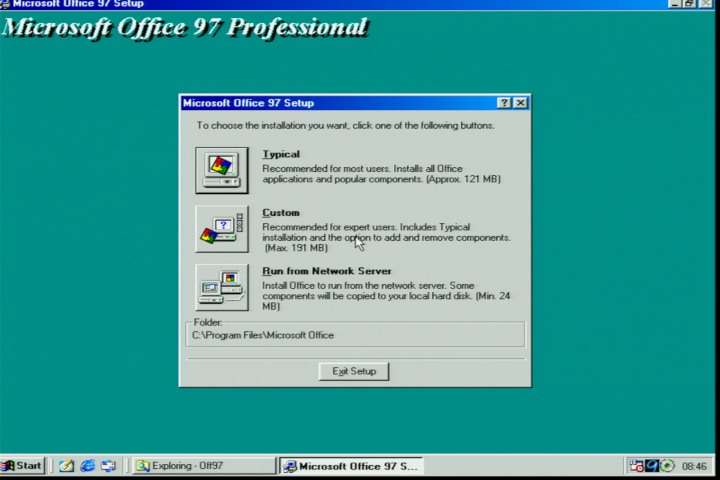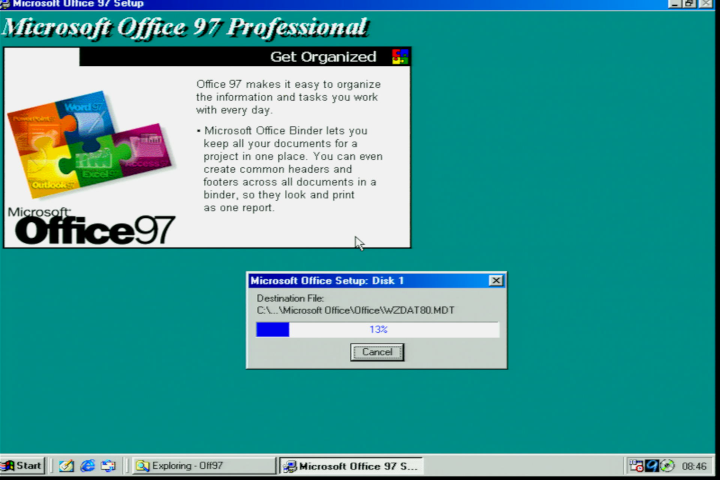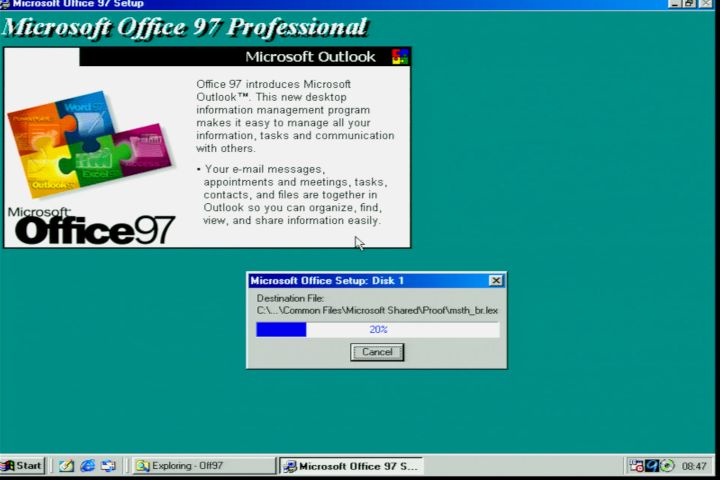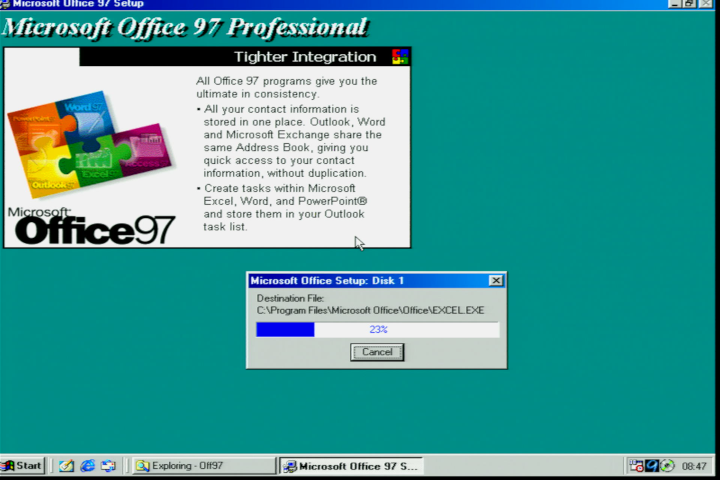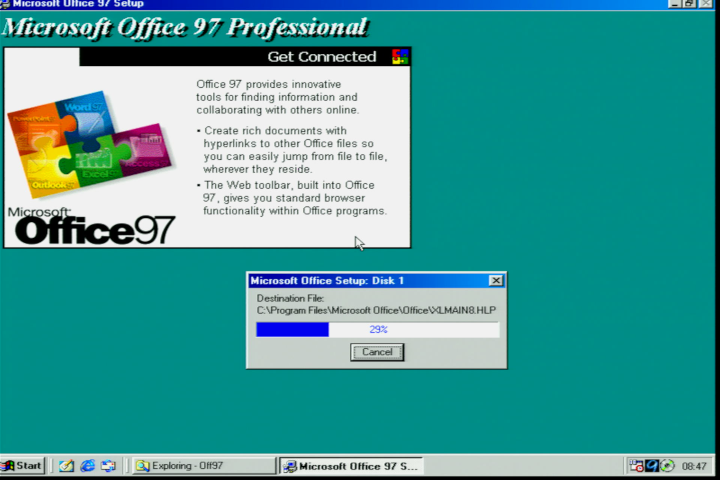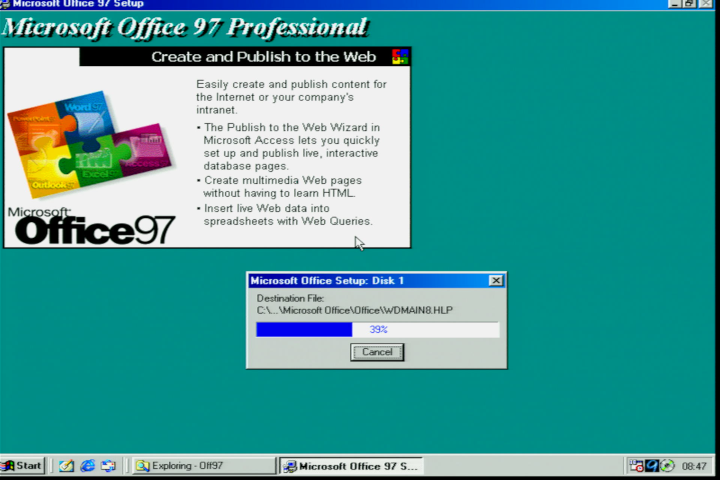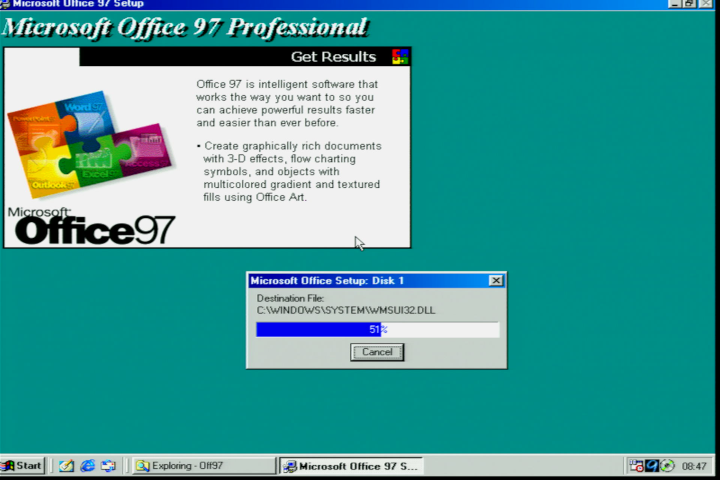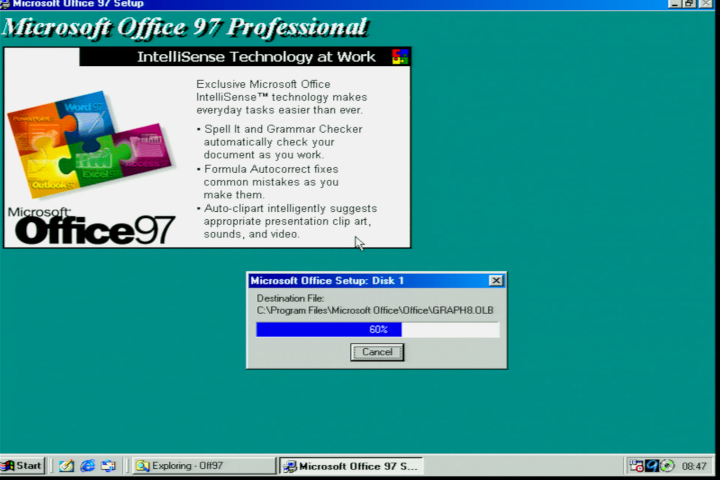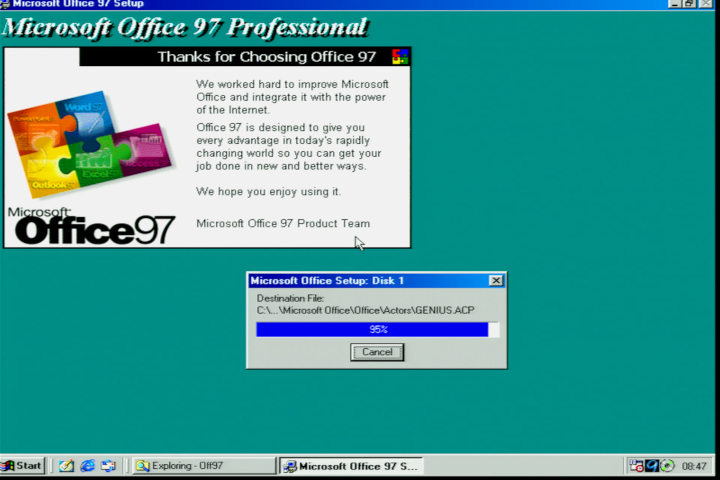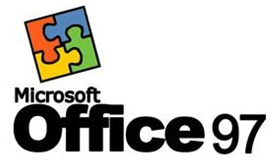 Microsoft Office 97
Microsoft Office 97
Introduction
Office 97, sometimes called Office 8.0, was released in November 1996. Depending on your needs, there were four editions available:
- Standard Edition - Word, Excel, Outlook, and PowerPoint
- Professional Edition - Word, Excel, Outlook, PowerPoint, and Access
- Small Business Edition - Word, Excel, Outlook, and Publisher
- Developer Edition - (as Professional Edition, plus developer tools and SDK)
Bundled into all of these was Internet Explorer 3.0 and Bookshelf Basics, and all but the Small Business Edition came with Schedule+ and Binder.

For existing owners of Microsoft Office 95, special Upgrade packages were available at launch. For the Office 95 Standard Edition you could upgrade to Office 97 for around $235 and for the Professional Edition, about $330.
Hot on the heels of Office 97 was Lotus SmartSuite 97, with Organizer being their version of Outlook.
New Features
Office 97 was the first version to integrate its applications with a web browser (using ActiveX), though this was limited and by no means forced upon you. For the first time you could save files from any of the applications in HTML format, and use hyperlinks to access other files.
A new email application called Outlook arrived, and was included in every version. Microsoft described this as a 'desktop information manager'. For those on a network Outlook allowed you to share contacts, calendars, and tasks in a Microsoft Exchange public folder.
An Office Assistant feature was added to the core applications could be used to provide context-sensitive help. A lot of you will remember 'clippy' (formal name was Clippit) and Einstein as two of the numerous assistants you could choose from.
Word now got a grammar checker that, like its built-in spell checker, worked on-the-fly.
Across the core productivity tools, Visual Basic for Applications (VBA) was now unified, allowing you to develop complex code behind the scenes to build your own applications that work with Word, Excel, Access, Powerpoint and Outlook. You did not need to buy the Developer Edition to be able to write, record, or run VBA code. What ODE (Office Developer Edition) provided was the means to deploy your application using the Microsoft Setup Wizard, source code control tools, Replication Manager (for synchronising databases), custom ActiveX controls, and a subset of the Microsoft Developer Network (MSDN) on the CD.
Setup
Office 97 came on a single CD-ROM, but could also be purchased in floppy disk format (with a whopping 44 disks just for the Standard Edition!). Installation requirements were as follows:
- Operating System: Windows 95, NT Workstation 3.51 SP5, or Windows NT 4.0 SP2
- CPU: 486 or higher
- Memory: 8 MB (12 MB for Developer Edition)
- Disk Storage: 25 MB - 200 MB, depending on options selected for installation
- Graphics Card: VGA or compatible (Super VGA 256-colour recommended)
- Other: Mouse or other pointing device
Installing Office 97 is a painless, if time-consuming, process - just insert the CD-ROM or the first floppy disk, open Explorer and run Setup.exe (or if on CD-ROM just let the 'Autorun' start the setup program for you):
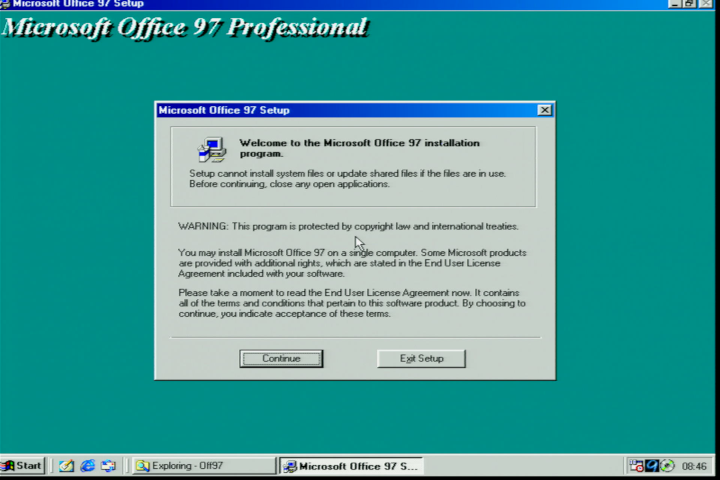
In Windows, new Start menu items were added to quickly start a new Office document or open a recently-used one:
